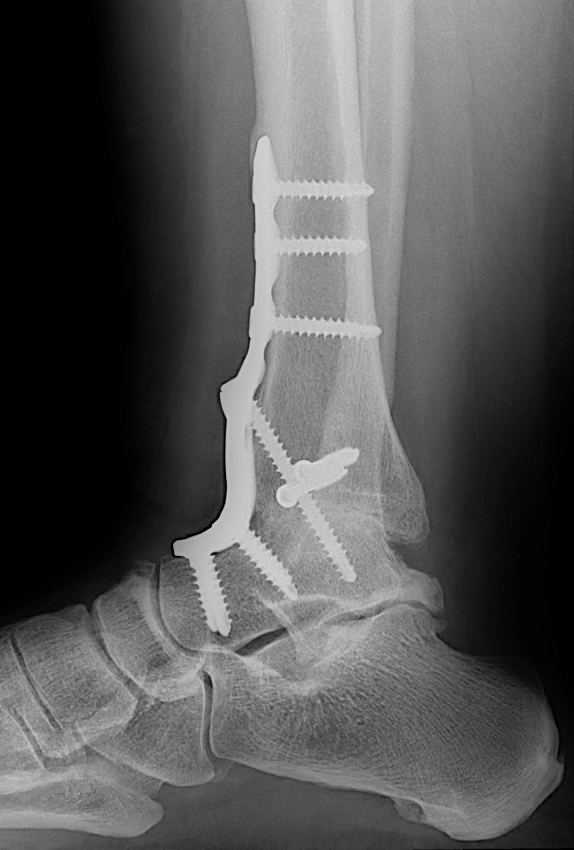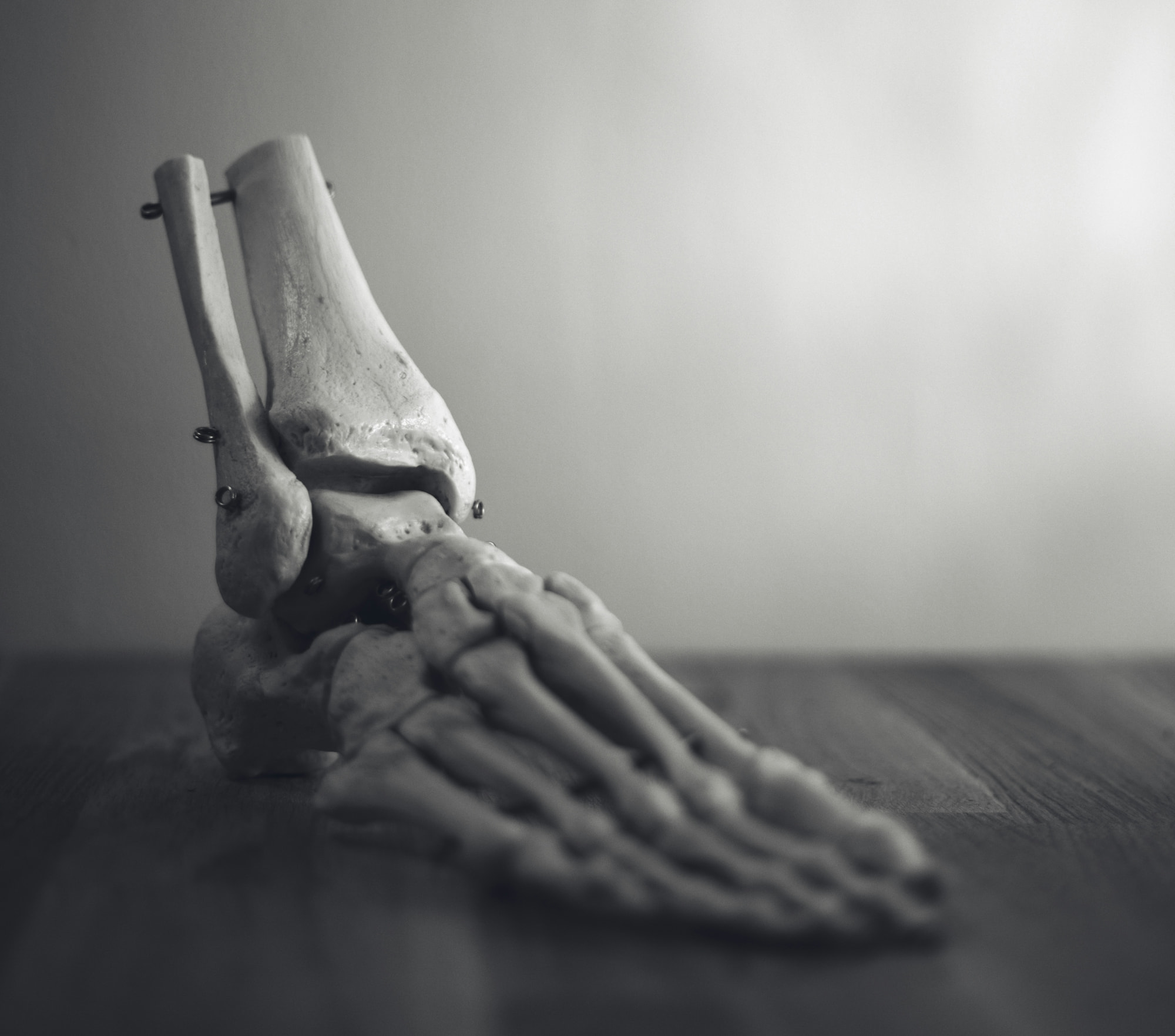Ankle fusion, also known as ankle arthrodesis, is recommended for individuals with severe ankle arthritis that significantly impacts their quality of life. It’s ideal for patients who experience:
- Chronic pain and stiffness in the ankle
- Difficulty walking or performing daily activities
- Limited success with non-surgical treatments, such as anti-inflammatory medications, braces, or steroid injections
Candidates for surgery must also meet certain health criteria, including having good blood sugar control if diabetic and being smoke-free, as smoking prevents healing. Read more about ankle arthritis below:
What the surgery involves
During the procedure:
- The worn cartilage is removed to prepare the bone surfaces, either through an incision at the front of the ankle or using keyhole surgery
- The bones of the ankle joint are aligned and held together to heal as a single, stable structure
- Screws and sometimes plates are used to secure the bones in place
- Depending on the case, the surgery may be performed through a larger incision (open surgery) or smaller incisions with a camera and tools (keyhole or arthroscopic surgery)
In some cases, a bone graft may be added to support the fusion process. Surgeons use imaging (X-rays) during the operation to ensure proper alignment and placement of hardware.

What to expect after surgery
Post-surgery, patients typically experience relief from arthritis pain but will lose the ankle’s ability to bend. Immediately after the operation:
- Your ankle will be placed in a cast or boot to protect it
- Swelling is managed by keeping the ankle elevated above the heart whenever possible
- Pain management involves prescribed medications for the initial recovery period
An overview of the rehabilitation pathway after ankle fusion surgery is below.
How long will you spend in hospital?
Ankle fusion is a same-day procedure, meaning patients return home a few hours after surgery.
Usual recovery times
Recovery from ankle fusion is gradual, with a focus on healing and regaining mobility:
- First 6 Weeks: No weight can be placed on the affected leg. Crutches, walkers, or knee scooters are used for mobility
- 6–8 Weeks Post-Surgery: X-rays are performed to check healing progress. If the fusion is successful, you may begin to place weight on your foot using a walking boot
- 10–12 Weeks and Beyond: You’ll transition to walking without the boot and begin to return to normal activities. Physical therapy will aid in strengthening and improving mobility in the surrounding joints
Swelling and mild discomfort when standing may persist for several months, but these symptoms typically improve over time.
Potential risks
- Infection is a rare but possible complication at the surgical site
- Nerve or blood vessel damage may cause numbness, pain, or impaired blood flow
- Bleeding or blood clots are risks common to all surgeries, and clots can be life-threatening if they form in your lungs
- Failure of ankle bones to fuse, which may necessitate revision surgery with bone grafts and new hardware
- Fusion limits ankle movement, placing extra stress on surrounding joints
- Increased stress on other foot joints can lead to arthritis over time
The decision to undergo ankle fusion surgery
Dr Lambers will take the time to discuss your options, help you understand the potential benefits and risks, and determine whether this treatment aligns with your lifestyle and goals. Surgery is not a decision that should be made quickly, and Dr Lambers will work with you to ensure you are comfortable in your decision before moving forward.

